Figura 1: Mater Deor(um) Mater Syriae, Mãe dos deuses, mãe dos Sírios, DS, Dea Syria. (Ciberneticamente colorido pelo autor a partir da obra “L’Antiquité expliquée” de Bernard de Montfaucon)
A propósito desta estranha representação de Dea Syria / Cible, Montfaucon diz o seguinte na pag. 16, do primeiro livro da obra referida:
«Cette figure, si elle est vraiment antique, représente la nature, de même que Diane d’Ephèse & Isis dans certains types. Ce qui fait naître quelque soupçon est, qu’on ne la trouve plus que dans les papiers de Pirro Ligorio,
ancien peintre Napolitain, qui dit l’avoir figurée sur un antique de
Virginio Ursin, Comte d’Anguillara. C’est ce Pirro Ligorio, contre la
bonne foi duquel se récrie souvent M. Fabreti très habile Antiquaire,
dans son livre de là Colone Trajane; mais principalement dans son grand
recueil d´inscriptions. (…) Ce qui augmente le soupçons c´est, qu’on na
jamais rien vu d’approchant soit dans Cybèle, soit dans quelque autre
divinité. Cependant c’est le Bellori habile Antiquaire qui la publiée e qui la donnée sans marquer aucun doute sur la vérité de ce monument.»
Não será pela sua singularidade que esta imagem de Dea Syria reproduzida por Pirro
Ligorio deixará de ter crédito porque a mitra é tão antiga como a coroa
real e todas parecem ter estado relacionadas com o culto de Dea Síria,
particularmente na qualidade de divina Sereia assistida pelos Apkallu
mesopotâmicos e, posteriormente, pelas mitras dos sacerdotes castrados de Cibele.
Bellori, in my opinion, shewed the judiciousness of his mind by this manner of acting. The monument is assuredly genuine. Singularity can never prove spuriousness:
if it should, there could not possibly exist in the world such a
monument as an unique. Nor can any censure from Fabrctti upon Ligorio
suffice to make us disbelieve the latter, when he says that: "he copied
it from an antique;" and especially when he adds, that this very antique
was in the possession "of Virginio Ursini, count of Anguillara." (…)
The
grand reasons in Montfaucon’s mind for doubting at all, were his full
conviction, that the mitre of a bishop only a few centuries ago was
different from this, a conviction which I have shewn to be all erroneous
; and a persuasion equally full, which I can equally prove to be
erroneous, that we observe " nothing of this kind," no mitre
particularly, " in the habits of Cybele." The very appellation of
mitre is derived from the language, as the very use of a mitre is found
in the practice, of the priests or priestesses of Cybele. — The Ancient Cathedral of Cornwall, by JOHN WHITAKER, B. D.
Segundo a Eneida de Virgílio a mitra era um elemento distintivo fundamental dos sacerdotes de Cibele.
Et nunc ille Paris cum semiviro comitatu, 215
E agora ele, Paris, com a sua comitiva de efeminados,
Maeonia mentum mitra crinemque madentem
Maeionia mitra no mento cingida e cabelos molhados
subnexus, rapto potitur:
goza o seu sequestro. (…)
— transliteração do autor de passagem (215-217) do livro 4 da Eneida de Virgílio.
Ligorio's employment at the Vatican was briefly interrupted in the summer of 1565 when he was imprisoned for one week. Allegedly, he had committed fraud by stealing building materials during several of his papal architectural projects. He was investigated extensively and had his writings removed. He was released with little incident, aside from having medallions worth six thousand scudi removed from his possession. Accusations like these, however, did not help Ligorio's already controversial fame and earlier allegations of forgery against him.
Como "cesteiro que faz um cesto faz um cento" talvez Pirro Ligorio tenha forjado a imagem de Cibele em questão o que, apesar de tudo não deixa de ser espantoso pela intuição que manifesta a respeito das cumplicidades entre o cristianismo primitivo e o culto desta deusa que por acaso tinha templo importante no monte do Vaticano (Frigiarium) e cujos sacerdotes se terão convertido massivamente ao cristianismo constatiniano a quem legaram parte das suas tradições e devoções à Virgem Mãe!
Como "cesteiro que faz um cesto faz um cento" talvez Pirro Ligorio tenha forjado a imagem de Cibele em questão o que, apesar de tudo não deixa de ser espantoso pela intuição que manifesta a respeito das cumplicidades entre o cristianismo primitivo e o culto desta deusa que por acaso tinha templo importante no monte do Vaticano (Frigiarium) e cujos sacerdotes se terão convertido massivamente ao cristianismo constatiniano a quem legaram parte das suas tradições e devoções à Virgem Mãe!
Parece que no Reino da Lídia toda a mitologia fundadora era minóica.
O nome original do Reino da Lídia era Meônia (Μαιονία – Maionia ou Maeonia) e Homero chama os habitantes da Lídia de maiones (Μαίονες).
Os Lídios eram chamados maiões por Homero porque eram filhos de Maia como Hermes e supostamente descendentes de um tal Manes, primeiro Rei da Lídia tal como Menés, que em Egípcio se lia Meni, de que derivou o nome do deus Min / Montu / Mendes.
Manes
(according to Greek mythology) was the eponymous first king of Maeonia,
and later came to be known as the first king in line of the primordial
house of Lydia, the Atyad dynasty (…). Manes was believed to be a son of Gaia and Zeus. Herodotus, in his account of the colonization of Tyrrhenia (…), makes Manes the father of king Atys.
The most famous gods of Phrygias are Sabazios and Manes which is called as Men later. Sabazios is about the sun and corresponds to Zeus. Manes is the moon god. However, there is no specific information about these gods.
Para que Manes fosse filho de Gaia e de Zeus teria
que ser um deus…a menos que estejamos perante um mero erro de tradução
de informação que originalmente significaria apenas isto: Manes era
filho da terra (Gaia) de Zeus, que supostamente nasceu numa gruta de
Creta. Se era um filho de deuses seria seguramente o deus Men que
por sinal também seria cretense por direito próprio visto terem sido
encontradas provas arqueológicas de que foi adorado na região de Pisídia
onde era sobretudo adorada Cibele, precisamente num local chamado Keraitai, ou seja, terra dos cretenses.
Figura 2: deus Men. (Marble relief of the Phrygian god Men. Roman, late 2nd century CE.)
Men (en grec: Μήν), appelé aussi Mensis (en latin : Mensis)
est un dieu célébré notamment à Antioche de Pisidie (actuelle Yalvaç)
en tant que protecteur des pauvres. Le géographe grec Strabon souligne
que cette divinité est associée à la déesse de la lune (Séléné) et en
fait un dieu d’origine phrygienne1. Plus loin il raconte qu’à Antioche
de Pisidie, le dieu s’appelait Mên-Arcaeus (en grec: Μήν Ἀρκαίος) et qu’il y avait nombreux hiérodules (serviteurs) dans les environs. (…)
Plus tard, Mên a été confondu à la fois avec le dieu phrygien Attis et avec le dieu Sabazios qui partagent une origine commune dans la divinité zoroastrienne de la lune Mah.
|
Ver: O DRAGÃO DE MARDUQUE / DRAGÃO PERSA (***)
The
list transmitted by Dionysius of Halicarnassus, which is considered the
most complete, quotes a series of persons who point unequivocally to
Phrygia. The first name is Masnas the earliest king, son of son of Zeus
and Ge; from Masnes, Kotys was born and from him, Atys. Various
traditions about him are known, among them the tradition derived from
Nonnos, according to which Masnes (in the form of Δαμασέη) is a giant, a
son of Earth, living near the banks of the Hermus. There is certainly
an allusion to this tradition on two Lydian coins from Sardis, one of
Alexander Severus and the other of Gordianus, in whose portrait there
are references to the account. While the name that interests us appears
on the first coin in the well known form of ΜΑΣΝΕΣ, on the second it is
possible to read MAΣANHΣ (*). If this was the original form, it is then
possible to suggest a connection with the Luwian term masana = "god".
(*)
– According to Head 1901, Introduction, pp. cxi-cxiii, whereas L.
Robert (Robert 1937, pp. 155-158) read ΜΑΣΔΑΝΕΣ (a thesis supported in
Robert J. and L. 1962, pp. 201-202). Head’s reading is accepted by
Gusmani 1960, p. 330. (…)
Numa época do "império da imagem" continuar a usar referências
difíceis de comprovar como argumentos de autoridade em segunda mão, num
campo como a história onde a prova documental é tudo, não abona muito em
favor da probidade de quem usa estes processos arcaicos de argumentação
quando seria muito mais fácil ter incluído aqui as respectivas moedas,
ou as sua referencias de catálogo, para que todos nós pudéssemos
pesquisar, comprovar e eventualmente contribuir com a nossa modesta
leitura para esclarece se de facto estamos perante um nome com variantes
ΜΑΣΝΕΣ, MAΣANHΣ e ΜΑΣΔΑΝΕΣ ou
se apenas uma destas formas é válida. Assim, com estas referências
imprecisas é como procurar agulha em palheiro algo que já foi encontrado
com muitas dificuldades pela arqueologia numismática para que a
humanidade não passasse inutilmente pelo mesmo, compreendesse melhor o
passado e evoluísse mais depressa, mas de maneira serena e segura!
Luw. māssan(i) ó Lyc. māhān(i) = "Deus / Senhor" <= *Ma-Chu-Anu.
> Marnes > Marnas.
ΜΑΝ < ΜΑΝ-HΣ < ΜΑΣ(A)Ν-HΣ < MAΣAN-HΣ < ΜΑΣ-ΔΑΝ-HΣ
Man < man-es < mas(sa)n-es < massan-es < *Ma-Chu-Anu
> maz-dan-es < Mesh-Tan
> maz-dan-es < Mesh-Tan
< *Ma-ish-Ki-An => Da-Kon > Dagon.
As
for Ma(s)nes, Plutarch tells us that the Phrygians considered Manes an
ancient king to be so good and powerful that great and wonderful acts
were still called μαηικά in Plutarch’s day, after his name. According to
Stephanus of Byzantium, the city of Manesion was founded by Manes". An
additional datum, if the reading ΜΑΣΔΑΝΕΣ on the coin of Gordianus is
accepted, would derive from the fact that the term Massana– could be the sovereign’s own name, like the Hittite term dUTUsi. — Attis: Between Myth and History: King, Priest and God, bay Maria Lancellotti.
As
diferentes maneiras de escrever o nome deste estranho deus anatólico
devem ter ocorrido nas litanias dos cultos do deus MEN em que foi
tratado quer como Men / Mensis, por ser lunar, de que derivou o «mês», Min, Montu & Mendes
que no Egipto eram deuses guerreiros e de fertilidade, Mino-tauro em
Creta de que pouco ou nada sabemos a não ser que seria um «filho da mãe»
taurino como Min e a quem eram sacrificadas jovens e crianças, e na Lídia e Lícia era um estranho deus lunar e astral parecido com Mitra, porque era de facto uma variante do Minotauro.
Este
deus teria variantes litúrgicas como: Manes / *Maião, filho de Maia como
Hermes, Ma(ssa)nes / Man(ass)és e, mais estranho ainda, Mazda-nes que sem o genitivo
ficaria *Masdão, ou seja, o grande (H)aura (couro, ou toureiro) Mazda. Esta variante, que seguramente seria rara, ajuda a explicar a etimologia da Aura Mazda,
que veremos relacionada com a Cobra solar alada que o *Masdão era,
porque Maz-Dan não é senão uma “cobra macho” e “deus menino” Dionísio,
filho primogénito solar da Deusa Mãe das cobras cretenses. Além das
variantes referida e documentadas é bem possível que nas litanias do
anatólico Men se fizessem trocadilhos com Dagon / Marnes, que seria uma variantes de Hadade...e o mais provável marido da deusa Derceto de Ascalão.
AURA MAZDA
However,
Mazda was taken from the Proto-Indo-Iranian female Mazda wisdom figure
while Ahura was taken from the Asura figure. Ahura known as Orhmazd
during the Parthian era, and Ohrmazd during Sasanian period 251-661CE. In Assyrian cuneiform we find the form Assara Mazda or Asura Mazda,
suggesting the existence of an earlier Proto-Indo-Iranian form prior to
common Iranian development. The male Ahura Mazda apparently accompanies
the royalty winged figure, but this figure may not in fact be Ahura as
commonly thought, but the royal Xvareneh. ([1]
Como contra facta non argumenta seria de esperar que depois da prova real da evidência arqueologia se aceitasse que Aura Mazda derivaria de uma expressão ritual assíria (semita) relacionada com Ashur,
com o qual aliás se assemelha. Porém o preconceito gera a cegueira
histórica que geralmente ocorre nos espíritos presos a mitologias fora
de época…e de contexto, como é o caso do arianismo anti-semita!
The name may be attested on cuneiform tablets of Assyrian Assurbanipal, in the form Assara Mazaš, though this interpretation is very controversial.
52
For references see A. Christensen, Die Iranier (Handbuch d. Klaus.
Altertums-Wissen-schafl III, Abt. 1.3:3.1), Munich 1933, 209 nº. 3.
Against the supposition that the name Assara Mazaš, occurring on tablets of the Assyrian Assurbampal,
represents Asura Mazda see A Ungnad, "Ahura-Mazdah und Mithra in
assyrischen textcu, OLZ XL VI, 1943. 193-201. Recently, however, M.
Mayrhofer has argued anew in favour of the identification, see his
"Neuere Forschungen zum Altpersischen", Donum Indogermamcum, festgabe f.
A.Scherer, Heidelberg 1971, 51-2. — A History of Zoroastrianism Vol I, by Boyce, Mary.
Obviamente
que a força do império Assírio foi mais poderosa do que a do nazismo e
foi suficientemente prolongada para influenciar profundamente o
pensamento dos seus vizinhos tal como o conceito do capital judaico
comunista deriva do capitalismo protestante...escrupulosamente praticado pelos judeus desde o tempo da diáspora em que se especializaram na contabilidade da dízima que cobravam e mandavam para o templo de Jerusalém. O capitalismo judaico começou então com a dedestruição da nação judaica por Tito.
Ahura-Mazdah < | Assara / Asura | Mazda / Mazaš < Ashur
| Mazaš < Mazû + ash > Mazitu.
+ D(e)a = Maz-da > Mas-tan.
O termo Mazû é um termo qualificativo assírio para cerveja cujo feminino é Mazitu. A cerveja esteve sempre ligada ao deus Enki / Ea e,
por isso, também e pela embriagues que provoca, ao poder mântico e à
loquacidade pseudo filosófica com que se fermenta a sabedoria. Este conceito teve seguramente uma relação com os sábios o que faz
com que o termo persa, de que deriva Mazda, seja suposto significar a
“inteligência e a sabedoria no feminino…o que deixa a suspeita de que
este termo seria cretense, porque arcaico e matriarcal, e ter sido nome da
Deusa Mãe porque seria a cobra Tiamat do mar primordial
"Mazda",
or rather the Avestan stem-form Mazdā-, nominative Mazdå, reflects
Proto-Iranian *Mazdāh (female). It is generally taken to be the proper
name of the spirit, and like its Sanskrit cognate medhā, means
"intelligence" or "wisdom".
Em boa verdade Mitra não foi reintroduzido senão no dogma porque este deus é mais arcaico que Aura Mazda pois deve ter a mesma origem do Minotauro (o que se compreende sabendo-se que, ao tempo da talassocracia cretense, os contratos seriam celebrados em nome de Minos, suposto pai do Minotauro)
que nunca teria deixado de ser utilizado pelo povo, seguramente outrora
colonizado por uma mesma cultura que ligaria o mar Egeu à Anatólia e
iria até à Índia. Como se tratava de um assunto tão sério como os
contratos negociais a cuja ma fé (druj) o masdeísmo pretendeu evitar, a teoria teve de se vergar à prática e, como pela boca morre o peixe, Mitra aparece porque Aura Mazda pretendeu acabar com a “má-fé” dos contratos. Como os contratos eram feitos em nome de Mitra este deus acabou perfilhado por Aura Mazda!
Figura 3: Aura Masda ou Ashur Mazaš.
Opposed to Ahura Mazda, or Ormuzd, is His rival, Anro Mainyus, (later Ahriman), the Evil Spirit.
Sataran: Sumerian and akkadian god of treaties, dispute settlements, boundaries.
Ahura Mazda = Spento Mainyus, Espírito Santo =>
Mainyus = Spirit.
> Sacar, deus da aurora!
Ahura < Sakura < Ka-kura | Mazda | Mashta < Meash
< Ma-ash > (Cobra) «Macho».
> Sataran > Saturan > Saturno.
Ahri < Ahir < Ahur(a) < Anhur < Ankur ó Kur-an > Krono.
> Anhru > Anro ≠ Urano???
| man < Mainyus < Mianish(us) < Mean-ish < Minus > Anat. MEN.
A dualidade Ahura Mazda / Ahriman é
uma sobrevivência do par de gémeos que era o andrógino primordial e que
consubstanciava aquilo que os fenícios apelidavam deuses da aurora Sacar & Salim, e que foram a origem da semântica dualista dos persas na medida em que representavam Hórus,
o sol diurno em oposição com o sol negro que era devorado todas as
noites pela deusa mãe, na forma do deus morto que veio a ser Osíris.
Mas, voltando ao Man(es)
da Anatólia verificamos que este deus, precisamente por ser a cobra
lunar da deusa mãe, era o *Masdão, possivelmente equivalente de Aura Mazda, por ser a cobra bicórnea e o toureiro da deusa mãe Mazitu, a cobra da divina sabedoria…e da cerveja e das bebida licorosas, de todos os elixires e poções magicas como o Soma védico era.
Figura 4: Coin of Menander. British Museum. (Legenda no alfabeto grego, ΒΑΣΙΛΕΩΣ ΣΩΤΗΡΟΣ ΜΕΝΑΝΔΡΟΥ)
Menandro
I (conhecido como Milinda em sânscrito e pali) foi um dos governantes
do Reino Indo-Grego, no norte da Índia e no Paquistão dos dias atuais,
de 155 ou 150 a 130 a.C.
O nome deste exótico rei, alexandrino e budista, deriva seguramente de Men-andro, lit. “um homem do (deus) Men”.
|
Mên
is shown with the lunar crescent behind his shoulders. This image is
packed with symbols which related to his cult. He has a Phrygian bonnet;
ribbons hang down from his shoulders and elbows; he holds a tall
sceptre his in right hand; his left elbow rests on column; in his left
hand is a globe with a small Victory, with a trophy over her shoulder;
his left foot resting on bucranium (an ox skull); at his right foot is a
cock walking to the left, its head turned to the right.
(…)
The second coin is of Tranquillina, the wife of Gordian III, 40 or 50
years later, and is from Sardes in Lydia, where Mên was called Mên
Askênos; probably a local cult name. This is a much smaller and lighter
coin. It shows the same Mên with many of the same attributes, and here
he also holds a pine cone in his outstretched hand.
Mên-Arcaios = Mên Askênos ó Mên | Arsh-kênos ó Welchenos < *Ker-Ki-Anu.
Dito de outro modo, Men anatólico além de revelar a sua origem cretense pela sua relação com o Minotauro reforça esta relação revelando num dos seus epítetos a identidade com o cretense Zeus Velcheno.
Figura 5: The reverse of a bronze coin of Julia Domna from Antioch in Pisidia showing the moon god Men.
|
Figura 6: The reverse of a bronze coin of Tranquillina from Sardes in Lydia showing the moon god Men.
|
There,
in accordance with some divine providence, both the leopards and some
of the other especially ferocious wild beasts offered their nipples to
the child and so gave it nourishment, and some women who were tending
the flocks in that place witnessed the happening, and being astonished
at the strange event took up the babe and called her Cybele after the
name of the place. The child, as she grew up, excelled in both beauty
and virtue and also came to be admired for her intelligence; for she was
the first to devise the pipe of many reeds and to invent cymbals and
kettledrums with which to accompany the games and the dance, and in
addition she taught how to heal the sicknesses of both flocks and little
children by means of rites of purification; in consequence, since the
babes were saved from death by her spells and were generally taken up in
her arms, her devotion to them and affection for them led all the
people to speak of her as the " mother of the mountain." The man who
associated with her and loved her more than anyone else, they say, was
Marsyas the Phrygian, who was admired for his intelligence and chastity;
and a proof of his intelligence they find in the fact that he imitated
the sounds made by the pipe of many reeds and carried all its notes over
into the flute, and as an indication of his chastity they cite his
abstinence from sexual pleasures until the day of his death. Now
Cybele, the myth records, having arrived at full womanhood, came to love
a certain native youth who was known as Attis, but at a later time
received the appellation Papas; with him she consorted secretly and
became with child, and at about the same time her parents recognized her
as their child. 59. Consequently she was brought up into the palace,
and her father welcomed her at the outset under the impression that she
was a virgin, but later, when he learned of her seduction, he put to
death her nurses and Attis as well and cast their bodies forth to lie
unburied; whereupon Cybele, they say, because of her love for the youth
and grief over the nurses, became frenzied and rushed out of the palace
into the countryside. And crying aloud and beating upon a kettledrum she
visited every country alone, with hair hanging free, and Marsyas, out
of pity for her plight, voluntarily followed her and accompanied her in
her wanderings because of the love which he had formerly borne her. When
they came to Dionysus in the city of Nysa they found there Apollo, who
was being accorded high favour because of the lyre, which, they say,
Hermes invented, though Apollo was the first to play it fittingly; and
when Marsyas strove with Apollo in a contest of skill and the Nysaeans
had been appointed judges, the first time Apollo played upon the lyre
without accompanying it with his voice, while Maisyas, striking up upon
his pipes, amazed the ears of his hearers by their strange music and in
their opinion far excelled, by reason of his melody, the first
contestant. (…)
And
Apollo, they say, laid away both the lyre and the pipes as a votive
offering in the cave of Dionysus, and becoming enamored of Cybele joined
in her wanderings as far as the land of the Hyperboreans. But, the
myth goes on to say, a pestilence fell upon human beings throughout
Phrygia and the land ceased to bear fruit, and when the unfortunate
people inquired of the god how they might rid themselves of their ills
he commanded them, it is said, to bury the body of Attis and to honor
Cybele as a goddess. Consequently the Phrygians, since the body had
disappeared in the course of time, made an image of the youth, before
which they sang dirges and by means of honors in keeping with his
suffering propitiated the wrath of him who had been wronged; and these
rites they continue to perform down to our own lifetime. As for Cybele,
in ancient times they erected altars and performed sacrifices to her
yearly; and later they built for her a costly temple in Pisinus of
Phrygia, and established honors and sacrifices of the greatest
magnificence, Midas their king taking part in all these works out of his
devotion to beauty; and beside the statue of the goddess they set up
panthers and lions, since it was the common opinion that she had first
been nursed by these animals. Such, then, are the myths which are
told about the Mother of the Gods both among the Phrygians and by the
Atlantians who dwell on the coast of the ocean. — DIODORUS OF SICILY, translation Bay C. H. OLDFATHER (Library of History 3.58.4).
The reference to Maion, Cvbele’s father, as "king of Phrvgria and Lvdia",
projects this account back to a pre-Lydian dimension, that is, to a
"mythical" Phrygia to which the Mermnads appealed as the foundation of
their dynasty. As we learn from Hcrodotus, the name of the Lydians is
taken from the people called Maeonian before the reign of Lydos. It seems fairly clear that here Cybele’s father must be considered the eponym of the Maeonians,
and this sets the account in a historical time prior to the "Atyad
dynasty". It is clear from the continuation of the narrative that its
specific aim is to establish the shift from pré Atyad to post-Atyad
Phrygia. In the account by Diodorus it is in fact possible to discern the various stages of a dynastic struggle between King Maion, Cybele’s father, and Attis,
the "local lad" loved by the exposed by her father as she is a female
and thus of no influence in the perspective of dynastic succession. — Attis: Between Myth and History: King, Priest and God, bay Maria Lancellotti.
It
has been conclusively verified by means of the inscription published by
Kayhan Dörtlük that the cult of Men had existed in Keraitai. — TEMPLE OF MEN IN KERAITAI WITHIN THE PISIDIA REGION (BUCAK, BURDUR, TURKEY), Hüseyin METİN.
Ou seja, a mitra da Lídia (terra próxima da Frígia) era a de Cibele!
Vobis picta croco et fulgenti murice vestis,
Para vós tingido é, de açafrão e púrpura fulgente, a roupa
desidiae cordi, iuvat indulgere choreis,
e, de indolente coração, agrada-vos a entrega à dança frenética, (615)
et tunicae manicas et habent redimicula mitrae.
e túnicas de amplas mangas tendes e, fitas nas mitras.
O vere Phrygiae, neque enim Phryges, ite per alta
Oh, veros frígios, que nem mesmo frígios, ide pelos altos
Dindyma ubi adsuetis biforem dat tibia cantum!
do Díndimo, onde sois assíduos ao bíforo canto que dá a flauta.
Tympana vos buxusque vocat Berecyntia Matris
Os tímpanos e o buxo vos chamam à Berecintia Mãe
Idaeae sinite arma viris et cedite ferro.” (620)
Idaeia; pousai no sítio as armas viris e cedei o ferro.
— transliteração do autor de passagem (614-620) do livro 9 Eneida de Ovídeo.
Berecintia es el sobrenombre dado a Cibeles, ya que en el monte Berecinto tenía un culto particular.
Berecinto é um nome que ressoa a cretense e se parece mais com um derivativo do nome da deusa do que o oposto porque Berecin-tia é literalmente a Dea Berecina, transliteradamente a *Keretina, ou seja, a cretense.
Berecin-tia < | Wer < Ker |-Kin(e) > *Kere-tina.
ó Welchen-os
Voltando
às deusas sírias verificamos que se não eram todas anfíbias eram pelos
menos todas elas poderosas deusas mães ladeadas por dois leões e
coroadas com as muralhas da cidade de que eram senhoras e protectoras.
Fosse
como fosse a lenda espalhou-se pelas costas da Palestina e da Síria
mediterrânica com a civilização cretense que passou primeiro para os
fenícios, possivelmente com a queda da talassocracia minóica, e depois
para os filisteus, embora esta cultura andasse pela Síria de Ugarit e
Alepo há muitos milénios antes, quiçá desde o inicio do neolítico... precisamente no rastos do deus Dagon / Marnas.
At Ashkalon, where she was called Derketo, she seems to have appeared as half fish, a mermaid goddess. In De Dea Syria, Lucian reported that he saw a statue of a Phoenician goddess who was a mermaid; he confirmed that she was called Derketo (Attridge and Oden 1976: 21).
Figura 7: Laureate
head right /Derceto-Astarte standing left, crescent on forehead,
holding dove and sceptre; triton with cornucopiae at feet, date to
right. (Antoninus Pius AE 26mm of Ascalon, Judaea. Dated CY 256 = 152/3 CE.)
El hecho de representarla con medio cuerpo de pez se debe a la leyenda referida por Diodoro Sículo en la que Derceto
(Dérceto) ofendió a Venus y entonces la diosa le inspiró una pasión
ciega hacia uno de los que le ofrecían sacrificios en el templo
(Caístro). De esta pasión nació una niña, Semíramis, que llegaría a ser
reina de Babilonia. Después de nacer su hija, también por obra de Venus,
acabó el amor que Derceto sentía por ella, y al que siguió el
conocimiento de su falta y la vergüenza de haberla cometido. Derceto,
llena de ira, abandonó a su hija, hizo matar al hombre a quien había
amado y se arrojó al agua dispuesta a darse muerte, lo que los dioses no
permitieron. Así dio origen a su morfología anfibia.
No entanto o nome específico desta deusa seria Der-ceto, a baleia *Der, ou seja, a cretense *Ker-tu enquanto grande peixe, golfinho, baleia ou grande serpente do mar.
Derceto (< Ker Ketho < *Kur-kik + An => Afrodite) = A goddess of fertility.
Derceto < Ther Ketho < Ker-Kiku > *Kur-Kiki =>
Ø Ka + *Kur-Kiki => Afrodite.
Tsilah Wedo = Haitian goddess of Beauty.
Aka Derceto < Tziraka-Ketho < TsilahWedo.
Tríades < Tari-at-hes < Tar-(i)-at-(ish) < Tar-ish, lit. “filhas de Ishtar”,
enquanto deusa do huluppu (a árvore da “vida eterna” e da “boa fruta”)!
Obviamente que a mais opulenta, magnífica e majestosa foi Diana de Éfeso que era simultaneamente Pótnia Teron, e por isso foi interpretado como sendo Artemisa, Senhora das muralhas da cidade como Cibele, e ictiforme como Dea Síria ou Atragatis.
The Ekron Inscription:
This temple was built by ‘Akish, son of Padi, son of Yasid, son of Ada,
son of Ya’ir, ruler of Ekron, for Ptgyh,* his (divine) lady. May she
bless him, and guard him, and prolong his days, and bless his land.
*Demsky
reads this divine name as "Pt[n]yh" and relates it to the Greek
"Potnia" ("Lady" or "Mistress"), perhaps referring to Asherah.
Ptgyh < Ptg(n)yh(a) < Putagnika < (Ne)Put-ani(h)a
=> Potnia Teron = Artemisa.
Como se comprova novamente a Senhora de Ekron era esposa de Neputano / Dagon e, portanto, uma Sereia.
In the West she was usually called Dea Syria, the “Syrian Goddess.”
Atargatis
reached Rome during the first Punic War (264-241 BCE). By the time of
the Roman novelist Apuleius, around 150-160 CE, the goddess’s begging
eunuch priests had become notorious. In his story The Golden Ass,
he described how a disreputable band of wandering followers of the
goddess acquired Lucius in his donkey form and used him to carry the
silk-bedecked image of their “foreign” goddess (195-199). The goddess he
praised as “omnipotent and omniparent [all-generating]” (195), while he
dismissed the priests as “lewd and very naughty fellows” (196). In the
novel Lucius was restored to human form by the great goddess Isis
(261-272).
The
variations in the iconography of Atargatis resulted from her being
identified with so many local goddesses, as well as great goddesses such
as the Egyptian Isis. A splendid Egyptianized statue of her, complete
with encircling snake, stood on the Janiculum in Rome in the 3rd century
CE (Godwin 1981: 158 Plate 124).
From Hieropolis in northern Syria, then, the cult of Atargatis
disseminated all through Syria, northern Mesopotamia, the Mediterranean
area, and the western part of the Greco-Roman world, even to Britain (Lightfoot 2003: 59). — Atargatis, the “Syrian Goddess”, by Johanna Stuckey.
Figura 8: Deusa de Petra: Atagartis, Aluzza ou Tiche.
|
Figura 9: Dea Síria romana ao estilo de Magna Mater Cibele.
|
Figura 10: Dea Síria romana identificada com Ísis.
|
At
the renowned Nabataean capital Petra, Atargatis’s cult was not very
important, but there is some evidence of the goddess’s presence there
(Taylor 2002: 132; Lindner and Zangenberg 1993). She might have been
identified with the Arabian goddess Al-`Uzza, the Venus star, who was the tutelary deity of Petra. Like her, Atargatis had a close association with springs and water. At Petra is a sanctuary that archaeologists named the Temple of the Winged Lions (Healey 2001: 42-44). It may have been dedicated to an Atargatis-like goddess (Hammond 1990).
Al-Uzza was most likely the consort of Dushares while Allat was his mother, and perhaps the mother of all the gods. In certain cases Al-Uzza seems to have outstripped the importance of Dushares to the Nabataeans as she is often depicted as the larger of two betyls.
Al-Uzza < El-Ussa < *Her-Usha < Kur-Kiki > Cret. Kurija.
Figura 11: Al-Uzza = Atargate? Fish Goddess from the Nabataean Khirbet et-Tannur. (Temple 70 kilometres from Petra, 1st century AD – Amman, Citadel Museum)
Depois
do elemento pisiforme de deusas aquáticas das nascentes e fontes
termais em simultâneo com a sua função de deusas das colheitas e dos
cereais que era comum a todas as deusas sírias…e a Dagon, vamos
verificar que os outros elementos comuns destas deusas sírias era o de
estarem relacionadas com cultos orgiásticos de castração e sacrifícios
sangrentos e o de serem confundidas com Tiche por serem coroadas com as torres da cidade de que eram a Baalat
(Senhora)…são tudo aspectos que acabam por as relacionar com as Deae Siriae e com as deusas da Anatólia, particularmente Cibele.
A COROA DE DEA SYRIA
Voltando
às deusas sírias verificamos que se não eram todas anfíbias eram pelos
menos todas elas poderosas deusas mães ladeadas por dois leões e
coroadas com as muralhas da cidade de que eram Senhoras e protectoras.
Esta tradição parace remontar à época arcaica grega e ser por isso de
origem minóica.
Enfim a tradição aponta o facto de a constelação Corona Borealis foi colocada
no céu em homenagem póstuma à sua amada Ariadne que teria sido a
primeira mulher a ser coroada em vida por Dionísio aunado a desposou
depois de a ter recebido de Afrodite como prenda de casamento que lhe tinha sido dada pelo seu marido o divino e despeitado ourives dos deuses, Hefesto.
Figura 12: Carved
ivory pin from Sparta. Archaic Period, 600s bce. The winged goddess
holding birds or lions is usually identified as Artemis, but the
qualities of goddesses in the archaic period are often interchangeable.
The feathered headdress is a trait of Hera, for example. Ortheia came to
be designated as Artemis Ortheia, but not by the Spartans.
Esta
Pótnia Teron arcaica de origem espartana tem a surpreendente
singularidade de segurar uma coroa na cabeça como se fora um açafate
de flores o que pode não ser uma demonstração muito clara da sua
soberania…ou, pelo contrário, talvez seja uma afrontosa ostentação de poder sobre a natureza!
|
Apollonius Rhodius, Argonautica 3. 997 ff (trans. Rieu) (Greek epic C3rd B.C.): "Remember Ariadne, young Ariadne, daughter of Minos and Pasiphae, who was a daughter of Helios (the Sun).
Figura 13: Cibele Matri Deum em moeda romana. (Montfaucon’s Antiquities)
A mais opulenta, magnífica e majestosa foi Diana de Éfeso que era simultaneamente Pótnia Teron, e por isso foi interpretado como sendo Artemisa, e Tiche também Senhoras das muralhas da cidade como Cibele, e ictiforme como Dea Síria ou Atragatis. Dea Síria era, como Cibele, protegida por dois leões e Senhora (Baalat) da sua cidade que transportava sempre à cabeça numa coroa amuralhada.
|
Diodorus Siculus, Library of History 4. 61. 5 (trans. Oldfather) (Greek historian C1st B.C.):
"At this same time, the myths relate, Dionysos showed himself on the
island, and because of the beauty of Ariadne he took the maiden away
from Theseus and kept her as his lawful wife, loving her exceedingly.
Indeed, after her death he considered her worthy of immortal honours
because of the affection he had for her, and placed among the stars of
heaven the Crown of Ariadne [the constellation Corona]."
Por isso, foi relacionada com a grega Tiche tal com que era, e ainda é confundida frequentemente…em resultado de uma das muitas Interpretatio Graeca erradas.
Figura 14: Atargatis, the Syrian Goddess. Abd-Hadad, the Priest-King. COIN OF HIERAPOLIS, DATE B. C. 332. (Note IN THE BIBL. NATIONALE, PARIS.)
Tyche
or Tykhe, be it her turreted head or her full figure, seated or
standing, was one of the most popular figures on coins from the 4th century BC to the time of Justinian I (527-565 AD) in a region spanning from Arabia to Spain. In ancient Greek religion, Tyche (Τύχη, meaning
"luck" in Greek) was the presiding tutelary deity that governed the
fortune and prosperity of an individual and a city and their destiny. In
Rome she was known as Fortuna. (…)
Although Tyche
was known since the time of Hesiod, her worship as the city goddess
seems to have evolved in the fourth century BC and varied from region to
region. One of her earliest representations with a city goddess
attribute appears on a coin of Issos in Cilicia, apparently struck
during Alexander’s campaign, just before the launch of Alexander’s
imperial coinage with the head of Young Herakles and Zeus on each side. On
the reverse of the Issos stater is enthroned Baal and on the obverse is
facing helmeted Athena; in field upper left is the turreted head of
Tyche — TYCHE – THE CITY GODDESS AS A POLITICAL ENTITY, Bekircan Tahberer – 2012.
Figura 15:
Cilicia, Issos. Balakros. 333-323 BC. AR Stater. Facing bust of Athena,
in triple-crested helmet / Baaltars seated left; grain ear, grapes to
left, B to right, I below.
Figura 16:
Cilicia, Issos. Time of Alexander III of Macedon, 333-323 BC. AR
Stater. Draped facing bust of Athena, in triple-crested Attic helmet;
I-S flanking neck / Baaltars seated left, holding lotus-tipped scepter;
grain ear & grape bunch to left, I below. SNGFr 419.
Na verdade, as moedas de Issos referidas no texto supra de Bekircan Tahberer são as aqui expostas como do tempo (333-323 aC.) de Alexander III da Macedónia, e não revelam nenhuma Tyche, por
mais que nos esforcemos para acreditar nisso. O que confirmamos é que
de facto a tradição grega clássica de origem Jónia era a de fazer de Atena Partenos, ou da sua equivalente romana Minerva,
a deusa das cidades. No caso presente foi isso que aconteceu mas as
crinas no elmo de tripla crista de Atena foi desenhado de cor por
artesãos locais que possivelmente conheciam mal as tradições clássicas
de Atenas e o resultado ficou confuso seguramente para que ficasse
parecido com a coroa solar das deusas mães anatólias e orientais em
geral.
Most
ancient cities had a goddess who watched over them and was often named
for the city. In the case of Rome, this goddess was Roma.
She
seems to have first appeared as a derivation of Minerva, whom the
Romans had borrowed from the Etruscans and associated with the Greek
goddess Athena. Even though they started as one and the same, Roma soon
was viewed distinct from Minerva and both continued to be worshipped.
On
Republican period coins, only her helmeted bust is usually shown. Under
the Empire coins, often show Roma as a standing warrior figure.
Occasionally, especially on late gold solidii, she is depicted seated on
a throne, but by then Rome had adopted Christianity and she was only a
symbol of the Empire, not a diety.
Iconographic
and stylistic features of those small coins suggest that they were
minted in the first half of the fourth century BC when Cilicia was under
the dominion of the Persian Empire. (…)
Figura 17: Turreted & veiled bust of Tyche right.
(Askalon, Palestine AE16. Dated Year 180 = 76-77 AD.)
|
Figura 18: ΓAZA, (…), veiled and draped bust of Tyche (…), Marnas symbol[2]. (Gaza. Antoninus Pius. Æ 20, 138-161 CE).
|
Sometime around 100 BC, a change in the coin iconography of Tyche became significant in the cities of Cilicia and Syria; a veil was added to the turreted head of Tyche.
The veil is an attribute of Demeter, the goddess of the harvest and
agricultural fertility, who was widely worshipped in Cilicia and Syria
where fertile land and a mild climate allowed year-around agricultural
activity.
(…) The city goddess continued to be one of the most prominent and longest enduring symbols of the polis in a vast geography from Arabia to Spain for many centuries. — TYCHE – THE CITY GODDESS AS A POLITICAL ENTITY, Bekircan Tahberer – 2012.
Seria
néscio falar aqui e agora das majestosas coroas amuralhadas de Cibele
que seguramente não faziam parte da tradição arcaica porque as cidades
de Creta tinham o mar por defesa única.
From
very early history to modern times, walls have been a near necessity
for every city. Uruk in ancient Sumer (Mesopotamia) is one of the
world’s oldest known walled cities. Before that, the city (or rather
proto-city) of Jericho in what is now the West Bank had a wall
surrounding it as early as the 8th millennium BC.
Figura 19: Triumphant Inanna-Ishtar, winged, with foot on her lion & star symbol. (Akkadian, ca. 2334-2154 BCE. S. Beaulieu, after Wolkstein & Kramer 1983-92)
|
Figura 20: Anahita & artaxerxes II. Como se pode confirmar os poderes soberanos de Inanna-Ishtar passaram no masdeísmo para Anakita… que os teria já por direito próprio por ser uma variante de Anat / Atena.
|
No
entanto as muralhas apareceram no começo da história na Caldeia e
vulgarizaram-se por todo o mundo ocidental com a civilização micénica
pelo que a grande deusa Mãe mediterrânica acabou por a tutelar quando
teve que saltar os muros das cidades da Anatólia espalhando-se depois
por todas as zonas de influencia minóica desde o alto neolítico.
Figura 21: "Atarateh" in Aramaic, wearing turreted crown. (SYRIA, Cyrrhestica. Bambyce. Abdahad. Circa 342-331 BC.)
|
Figura 22: Deia Síria de Byrtus (Beirute) com todos os atributos de Atena (e da celta Brígida) mas com a coroa típica de Dea Síria.
|
Um interessante ponto da confusão da Deusa mãe com Tiche aparece-nos
de forma estranha no reino helenista da Arménia onde a coroa da deusa
mãe foi adoptada como tiara e usada ostensivamente pelos reis helenistas
da arménia ecomo símbolo da sua soberania até que esta acabou nas mãos de
Marco António.
Figura 23: Mark
Antony Denarius Silver, 37 BC. In memory of the victory over Armenia.
Head of Antony on the left. Armenian tiara symbol of Armenia on the
right. On the backdrop bow and arrow another symbols of Arménia.
Figura 24: Armenia, Tigranes II. 95-56 BC. Tyche of Antioch seated right on rock, holding branch, river-god Orontes below.
Figura 25: Achaemenidan Seal.
A
importância da coroa amuralhada persa que veio a ser o protótipo das
coroas medievais era tal no culto oriental masdeísta que veio a ser
adorada em conjunto com o “disco solar alado”.
No entanto esta coroa amuralhada era da deusa Arménia Anahit que correspondente à Anahita persa.
|
Assim,
a coroa amuralhada da Deusa Mãe aparece primeiro como símbolo da cidade
nas moedas do reino da Arménia onde se transforma em símbolo da
soberania real e só depois como Tiche por Interpretatio Graeca.
Figura 26: 4th C. Sasanian Bowl Anahita sitting on a Lion. and holding sun in her right hand. [3]
Nesta representação de Anahita
como deusa da astrologia e possível mãe de Mitra, confirmamos a sua
relação com a tradição das poderosas deusas mães guerreiras dominadoras
dos leões. Assim, Anahita é seguramente uma variante fonética de Anat e de Atena e pouco ou nada tendo a ver com Tiche…a menos que aceitemos que esta deusa grega da sorte era afinal Dice, deusa da justiça e variante de Dictina / Decreto...e por isso mesmo soberaníssima.
|
[1] ) https://japanesemythology.wordpress.com/ahura-mazda-the-iranian-and-proto-indo-european-supreme-sky-god-possibly-related-to-amaterasu/
[2] Obviamente que o símbolo de Marnas não poderia estar diante de uma deusa que não fosse Atargate, esposa de Dagon / Marnas.
[3] Marca de água de Circle of Ancient Iranian Studies (CAIS), http://www.cais-soas.com/.

![clip_image002[1] clip_image002[1]](https://arturjotaef.files.wordpress.com/2016/04/clip_image0021_thumb2.jpg?w=860&h=1154)
![clip_image004[1] clip_image004[1]](https://arturjotaef.files.wordpress.com/2016/04/clip_image0041_thumb2.jpg?w=411&h=674)
![clip_image006[1] clip_image006[1]](https://arturjotaef.files.wordpress.com/2016/04/clip_image0061_thumb2.jpg?w=846&h=507)
![clip_image008[1] clip_image008[1]](https://arturjotaef.files.wordpress.com/2016/04/clip_image0081_thumb2.jpg?w=414&h=404)
![clip_image010[1] clip_image010[1]](https://arturjotaef.files.wordpress.com/2016/04/clip_image0101_thumb2.jpg?w=414&h=414)
![clip_image012[1] clip_image012[1]](https://arturjotaef.files.wordpress.com/2016/04/clip_image0121_thumb2.jpg?w=411&h=411)
![clip_image014[1] clip_image014[1]](https://arturjotaef.files.wordpress.com/2016/04/clip_image0141_thumb2.jpg?w=818&h=368)
![clip_image016[1] clip_image016[1]](https://arturjotaef.files.wordpress.com/2016/04/clip_image0161_thumb2.jpg?w=285&h=702)
![clip_image018[1] clip_image018[1]](https://arturjotaef.files.wordpress.com/2016/04/clip_image0181_thumb2.jpg?w=291&h=720)
![clip_image020[1] clip_image020[1]](https://arturjotaef.files.wordpress.com/2016/04/clip_image0201_thumb2.jpg?w=264&h=729)

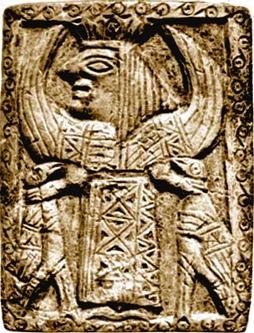
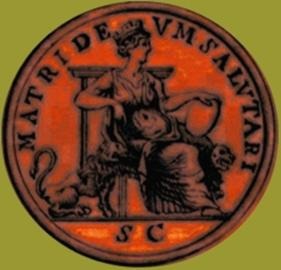

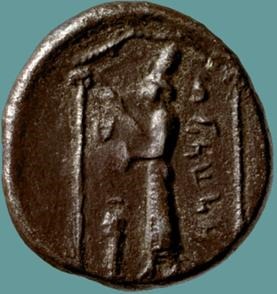
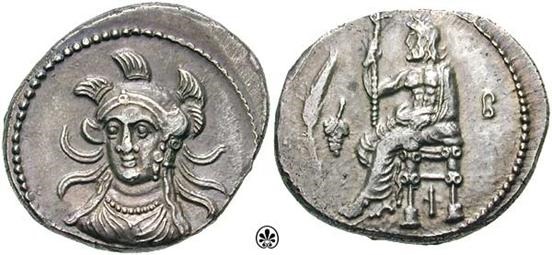
![clip_image033[1] clip_image033[1]](https://arturjotaef.files.wordpress.com/2016/04/clip_image0331_thumb.jpg?w=750&h=354)
![clip_image035[1] clip_image035[1]](https://arturjotaef.files.wordpress.com/2016/04/clip_image0351_thumb.jpg?w=414&h=414)
![clip_image037[1] clip_image037[1]](https://arturjotaef.files.wordpress.com/2016/04/clip_image0371_thumb.jpg?w=410&h=410)
![clip_image039[1] clip_image039[1]](https://arturjotaef.files.wordpress.com/2016/04/clip_image0391_thumb.jpg?w=261&h=263)
![clip_image041[1] clip_image041[1]](https://arturjotaef.files.wordpress.com/2016/04/clip_image0411_thumb.jpg?w=267&h=267)
![clip_image043[1] clip_image043[1]](https://arturjotaef.files.wordpress.com/2016/04/clip_image0431_thumb1.jpg?w=261&h=261)
![clip_image045[1] clip_image045[1]](https://arturjotaef.files.wordpress.com/2016/04/clip_image0451_thumb1.jpg?w=414&h=207)
![clip_image047[1] clip_image047[1]](https://arturjotaef.files.wordpress.com/2016/04/clip_image0471_thumb1.jpg?w=417&h=206)
![clip_image049[1] clip_image049[1]](https://arturjotaef.files.wordpress.com/2016/04/clip_image0491_thumb1.jpg?w=396&h=278)
![clip_image051[1] clip_image051[1]](https://arturjotaef.files.wordpress.com/2016/04/clip_image0511_thumb1.jpg?w=450&h=264)
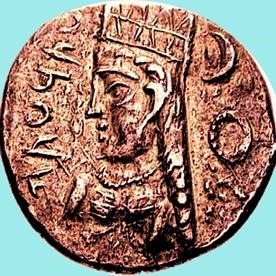
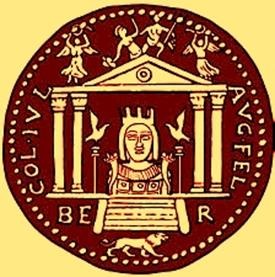

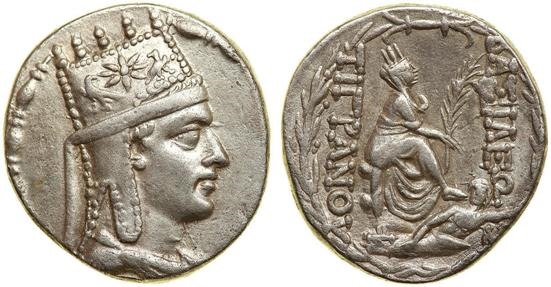
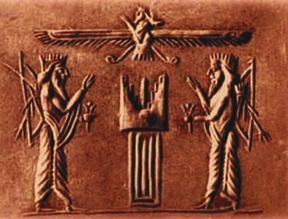
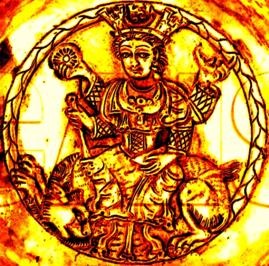
Sem comentários:
Enviar um comentário